
What is the Meaning of Noah and the Ark?
The story of Noah and his Ark has been told as a children’s story for so many centuries that nowadays no one suspects the real meanings it hides. Instead, it is seen like all children’s stories: as something sweet and foolish. Yet, the story of Noah was written in the Bible by Moses not as entertainment for babies, but as part of the sacred science he encoded in his books. Moses, a man who stood face to face with God, did not waste his time on trifles. He wrote the story of Noah to teach something important to those who wished to have the experiences he had. Meeting divinity is no easy feat.
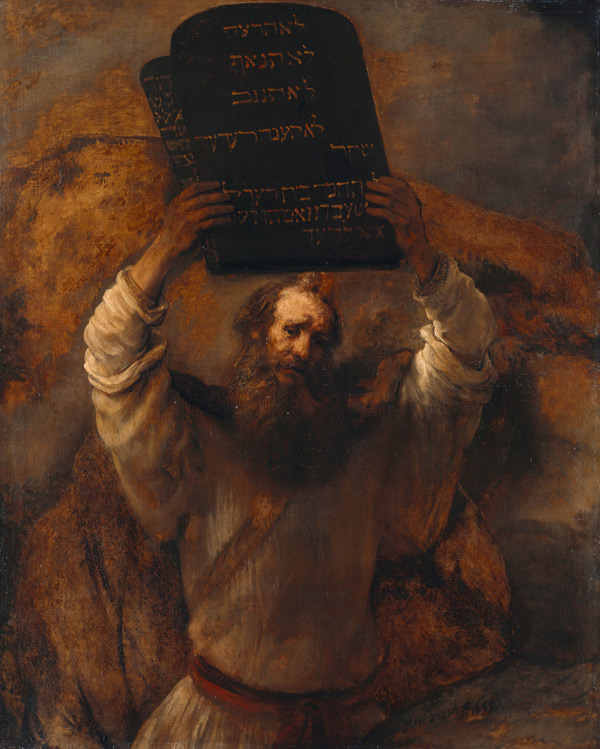
"...when [after speaking with God] he came down from the mount, that Moses wist not that the skin of his face shone while he talked with him. And when Aaron and all the children of Israel saw Moses, behold, the skin of his face shone; and they were afraid to come nigh him." - Exodus 34
In case you do not know the story of Noah, it is told in the first book by Moses, called Genesis / Bereshit, chapters 6-8. In short, it explains how divinity, seeing the degeneration of humanity, decides to destroy all living things, save the few who are pure, led by Noah. He is told to build “an ark” (a boat) in which he takes his family and two of every animal, within which they survive a worldwide flood.
Moses was not the only one to tell the story. The story of Noah is older than the Bible.
Contemporary scholars believe the books of Moses were composed in the sixth century BC. Yet the story is told in books more than a thousand years older than the Bible.
From The Instructions of Shuruppak, Sumerian, 1700 BC or older:
“Day by day, standing constantly at ……. Something that was not a dream appeared, conversation ……, …… taking an oath by invoking heaven and earth. In the Ki-ur, the gods …… a wall. Zi-ud-sura, standing at its side, heard: "Side-wall standing at my left side, ……. Side-wall, I will speak words to you; take heed of my words, pay attention to my instructions. A flood will sweep over the …… in all the ……. A decision that the seed of mankind is to be destroyed has been made. The verdict, the word of the divine assembly, cannot be revoked. The order announced by An and Enlil cannot be overturned. Their kingship, their term has been cut off; their heart should be rested about this…” […]
“All the windstorms and gales arose together, and the flood swept over the ……. After the flood had swept over the land, and waves and windstorms had rocked the huge boat for seven days and seven nights, Utu the sun god came out, illuminating heaven and earth. Zi-ud-sura could drill an opening in the huge boat and the hero Utu entered the huge boat with his rays. Zi-ud-sura the king prostrated himself before Utu. The king sacrificed oxen and offered innumerable sheep…
[…]
"Zi-ud-sura the king prostrated himself before An and Enlil. An and Enlil treated Zi-ud-sura kindly ……, they granted him life like a god, they brought down to him eternal life. At that time, because of preserving the animals and the seed of mankind, they settled Zi-ud-sura the king in an overseas country, in the land Dilmun, where the sun rises.”
This story is also preserved in Hindu scriptures as old or older than the Bible.
“…there was a powerful and great Rishi of the name of Manu. He was the son of Vivaswan and was equal unto Brahma in glory. And he far excelled his father and grandfather in strength, in power, in fortune, as also in religious austerities.
“…the dissolution of all this mobile and immobile world is nigh at hand. The time for the purging of this world is now ripe… Thou shall build a strong massive ark and have it furnished with a long rope. On that must thou ascend, O great Muni, with the seven Rishis and take with thee all the different seeds which were enumerated by regenerate Brahmanas in days of yore, and separately and carefully must thou preserve them therein… thou shall act according to my instructions, for, without my assistance, thou canst not save thyself from that fearful flood.'
[…]
“And there was water everywhere and the waters covered the heaven and the firmament also. …the fish diligently dragged the boat through the flood for many a long year and then… it towed the vessel towards the highest peak of the Himavat. And, O Bharata, the fish then told those on the vessel to tie it to the peak of the Himavat.” - The Mahabharata, Book 3: Vana Parva: Markandeya-Samasya Parva: Section 186
There are more: the story of the “great deluge” has been told not only by the Hebrews, Christians, Sumarians, and Hindus, but also by the Greeks (Deukalion), the K’iche’, Maya, Lac Courte Oreilles Ojibwa, and Muisca, people from many cultures, on many continents, and many eras.
Many interpret the worldwide sources of the story as evidence that the Noah story happened physically, literally, and conveys an historical account of a literal worldwide flood. Like all ancient stories, there are literal elements. Noah was a person. Civilizations were destroyed, and some inhabitants — those who listened to divine guidance — were saved. Yet, this is not the real importance of the story. Ancient history has little bearing on our suffering in these moments. The value of the story is much deeper than can be found in a literal interpretation. To get the real meanings, one must know how to read the code.
Symbolism and Myth
All genuine scriptures are allegorical and symbolic. They are not literal documentations of history, although some of the figures, personages, and characters described in the holy texts did exist. Nevertheless, their depiction within sacred scriptures have meant to serve as a representation of principles the spiritual devotee of any religion seeks to develop within themselves as part of the path that leads to complete development. The Ark of Noah hides this mystical science in a symbolic way.
The Bible is a collection of writings. The first part, the Old Testament, is translated from the Jewish tradition. In Judaism, that collection of writings is called the Tanakh. Specifically, the story of the Ark is in the Torah, the five books of Moses. Yet, in Judaism, there are many more scriptures, and not all are available to the public. In other words, there are levels of teachings. Christianity, on the other hand, has rejected most of those other writings, even though the founder of Christianity is a master of those writings. We point this out because Jesus, as a Jew and a master of Hebrew and the secret teachings of Judaism, has not been followed as an example by his students. They have willingly avoided the knowledge needed in order to understand their own tradition. A Christian who knows Hebrew and Kabbalah understands Jesus and Christianity far better.
The secret teachings of Judaism are beautifully documented in a scripture called “The Book of Splendor” (Sepher ha Zohar). About the symbolic nature of the scriptures, it says:
“Rabbi Simeon says: ‘Woe to the man who says that the Torah came to relate stories, simply and plainly, and simpleton tales about Esau and Laban and the like. If it was so, even at the present day we could produce a Torah from simplistic matters, and perhaps even nicer ones than those. If the Torah came to exemplify worldly matters, even the rulers of the world have among them things that are superior. If so, let us follow them and produce from them a Torah in the same manner. It must be that all items in the Torah are of a superior nature and are uppermost secrets.
“Come and behold: the world above and the world below are measured with one scale. The children of Yisrael below correspond to the lofty angels above. It is written about the lofty angels: "who makes the winds his messengers" (Psalms 104:4). When they descend downwards, they are donned with the vestments of this world. If they had not acquired the dress for this world, they would not be able to exist in this world, and the world would not be able to stand them. And if this is so for the angels, how much more so is it for the Torah that created these messengers and all the worlds that exist due to her. Once it was brought down to this world, if it had not donned all these covering garments of this world, which are the stories and simplistic tales, the world would not have been able to tolerate it.”
Therefore, what is important is the message behind the veil.
Those who seek only literal interpretations of scripture become confused, because the Bible is not an explicit historical text. Scriptures were written to communicate spiritual knowledge, and the best way to communicate that kind of knowledge is in spiritual language, which is that language of metaphor, allegory, and symbolism. It would be absurd to believe that everything in America is red, white, and blue like its flag, yet this is what is being done by those who read spiritual documents literally: they interpret the symbols literally. A flag is a symbol. So are the characters and stories in scripture.
Those who seek physical evidence of the events described in the Bible are as foolish as someone trying to find the bodies of Humpty Dumpty or Jack and Jill. Children’s stories are designed to teach, not to be read as literal history. Scriptures also are designed to teach, but on a higher level than children’s stories. The characters of children’s stories represent qualities, events, ways of behaving; so do the characters of the scriptures, yet even more, they represent stages of spiritual development.
The events mentioned in the Bible may be drawn from past events, yet many more of its events, characters, and places never even existed in the first place. Again: each element of the Bible is primarily symbolic, not literal.
Although some scientists believe they have found the physical ark used by Noah in the Old Testament, this is not plausible, since there was never a wooden boat used by a man named Noah to escape a worldwide flood. The ark is a symbol.
What little actual history is in the Bible is the least significant content within it. Moreover, if one does attempt to interpret scriptures literally, it is easy to see that little of it makes logical, practical sense, and is often completely contradictory. This underscores the fact that the Bible is not meant to be interpreted literally.
Some examples of the symbolic nature of scripture include the life span of the Bible’s characters, with important figures living up from anywhere between 150 to 900 years old. Noah was reported to live 500 years old, a miraculous feat in itself, before he even begot children, whom also lived to extensive old age. Although in esoteric teachings we are taught that in previous eras, before humanity degenerated into barbarism, the life span of the human being was longer than it is today, still these numbers point towards something symbolic, not literal. This relates to the study of numerology within Judaism, known as the Kabbalah. By knowing Kabbalah, we can interpret these ages as something representative of stages in spiritual development, dramatized through the Bible’s characters like Noah, his wife, and his children. These numbers bear spiritual meaning, since the Bible is a book of spiritual instruction, and is not, as many people think, a literal documentation for the physical lifespans of historical individuals.
Although it is unknown to most of humanity, the fact is that religious and mystical literature was always written for a specially educated, small group, who in turn provided from that literature the tiny servings they felt would help the uneducated. Those lacking the special understanding would have no idea there was more meaning than what they were told. In fact, there are many levels of meaning in each scriptural story. Symbolically, we say there are seven levels of meaning to every scriptural tale. Yet, even that statement is symbolic, metaphorical.
Before we can analyze one important meaning of the story of Noah, we will summarize it here for those who are not familiar with it.
Synopsis of Genesis (6-9)
As humanity developed from the lineage of Adam, Eve, and their children, it progressively degenerated through cruelty, evilness, and barbarism. Therefore God repented for having created humanity, alongside the fish of the sea, the animals of the earth and the birds of the sky.
However, Noah and his family found grace before the eyes of God, for while the earth became filled with violence and corruption, Noah, his wife, and three sons, Shem, Ham and Japheth, were the favored generations of the Lord.
Therefore, God told Noah that He would destroy the earth, and instructed Noah to build an ark of gopher wood, fortified with pitch, the length being three hundred cubits, the breadth of it fifty cubits, and the height thirty cubits. The ark would have a window, alongside three levels or stories to house Noah, his family, his son’s wives, and a male and female animal of every species from the earth, including cattle, birds and creeping things. Of every clean beast, Noah was instructed to take seven pairs; but of every unclean animal, only two. He was also told to take seven pairs for the birds of the air.
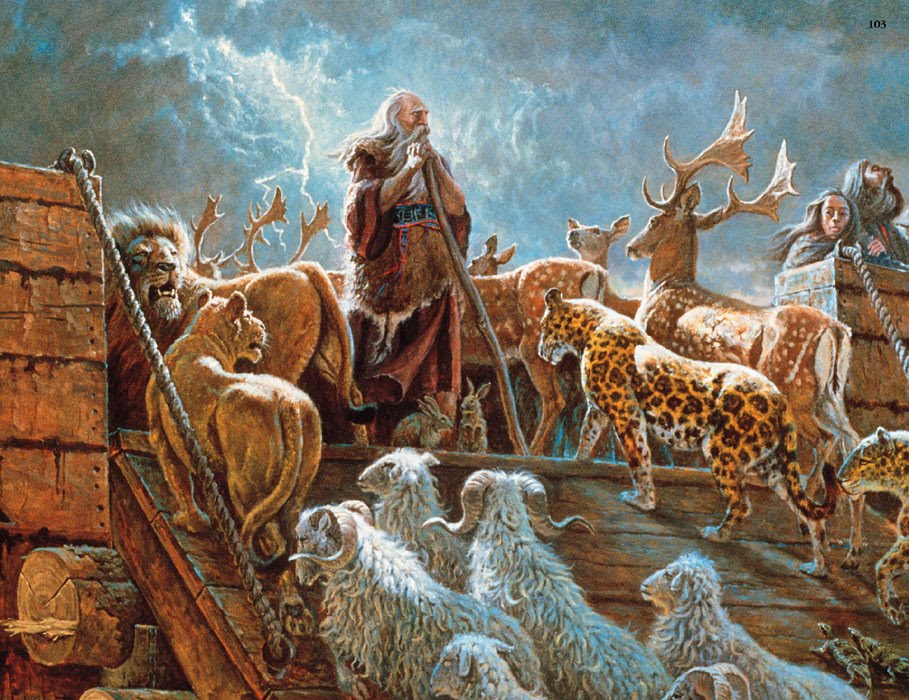
God told Noah that he would cause rain to flood the earth for forty days and forty nights, and that all life on the earth would be extinguished. Noah was 600 years old when the rains came, during the seventeenth day of the second month of the year. He and his family were raised in the ark above the flood which swallowed earth and heaven, the waters having risen 15 cubits up above the earth. The floods prevailed over the earth 150 days.
Afterward, God provided wind to assuage the floods, remembering Noah, his family, the ark and the animals therein. The rains subsided and the floods diminished, thereby placing the ark, on the seventeenth day of the seventh month, above the mountains of Ararat. The waters continued to decrease until the tenth month, when the tops of the mountains could be seen.
Noah then sent a raven and a dove to scout the earth for dry land, having found no place to rest except for the ark. After seven more days, Noah sent the dove again to scout for dry land, and when the dove returned with an olive leaf in its beak, he knew the floods have subsided.
On the first day of the six hundredth and first year, Noah removed the covering of the ark and saw dry land. God then spoke to him, telling him to bring his family and the animals of the ark in order to be fruitful and multiply on the earth. Out of gratitude, Noah built an altar and made burnt offerings of every clean animal, and the fragrance was appealing to God, who said that He would never again destroy humanity as he had done with the flood.
God therefore made a covenant with Noah, his family, his successors, and the animals of the earth, that He would not destroy the earth as He did previously, and as a token of his promise, showed a rainbow representing His pact with man.
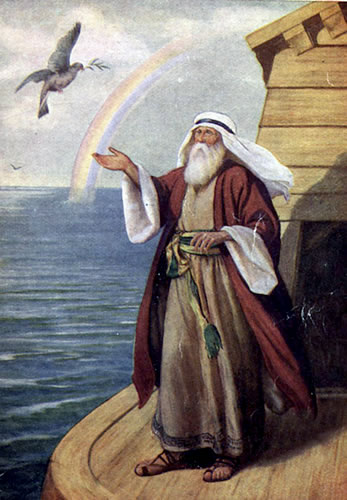
The Ark
To begin understanding how the story of Noah is symbolic, let us examine the word “Ark.”
Firstly, there is no reference to a boat in the original Hebrew scriptures.
In English, the Bible says:
“Make thee an ark of gopher wood…” - Genesis / Bereshit 6:14
By popular interpretation, this has been understood to be “a boat.” Yet in Hebrew, the original writing, it says:
“Make thee a תבה tebah of gopher wood…” - Genesis / Bereshit 6:14
Tebah תבה means “chest, box, case,” or “hull, body.” In short, tebah indicates a container. In Hebrew, there are many words for boat or ship, but tebah is not one of them.
Obviously, the word tebah is pretty far from the word ark. So where did the word Ark come from?
Although the word ark does not appear in the Hebrew scriptures (Tanakh or Torah), it does appear in the Latin translations of the Bible as “arca,” which translates into different words, including 1) a chest, both as a box and the trunk of the human body, and 2) also as a coffin, as that which Joseph in the Old Testament was placed within when he died.
Of course, in the Bible, there are several types of “arks.” In each case, the “ark” is a container that protects something sacred. It is not a literal ship or a boat; rather, it is like the “hull” of a seed: it protects the life-giving elements inside.
The word “ark” is obviously related to “arcane, arcanum” which means something hidden, a secret, known only to those specially informed. Therefore, the Ark of Noah refers to something unbeknownst to the public level of religion. The arcane knowledge has always been reserved for those who were prepared beforehand to use it.
In order to understand that secret and what it means, we have to look at the implications of the story and the meanings of the Hebrew words used in it.
The Story of Noah Begins
The story of Noah begins in Chapter 6 of the book of Genesis.
“And הוהי Iod-Chavah [God] saw that the impurity [רע rah: pollution] of Adam was great in the earth, and that every imagination of the thoughts of his heart was only רע impurity continually.
“And it repented הוהי Iod-Chavah that he had made Adam on the earth, and it grieved him at his heart.
“And הוהי Iod-Chavah said, I will destroy Adam whom I have created from the face of the earth; both Adam, and behemoth [animal, beast], and the creeping thing, and the fowls of the heavens; for it repenteth me that I have made them.
“But [Noach, Noah] found grace in the eyes of הוהי Iod-Chavah.” –Genesis 6:5-8
So this story really starts with Adam.
Adam and Eve
The first drama in the Bible is the story of Adam and Eve [Genesis 1-4], who at first lived in a state of bliss and knew divinity personally, yet later chose to eat the “forbidden fruit” of the Tree of Knowledge of “Good and Evil.” Those important words are written tob ve rah in Hebrew, which mean “goodness and impurity.” They imply that the Tree of Knowledge is dual: it can be used for benefit through purity, or harm through pollution or impurity. Adam and Eve left Eden because they broke the commandment given to them by divinity, thus they became polluted by רע rah: impurity. That is how they lost the ability to walk and talk with Elohim.
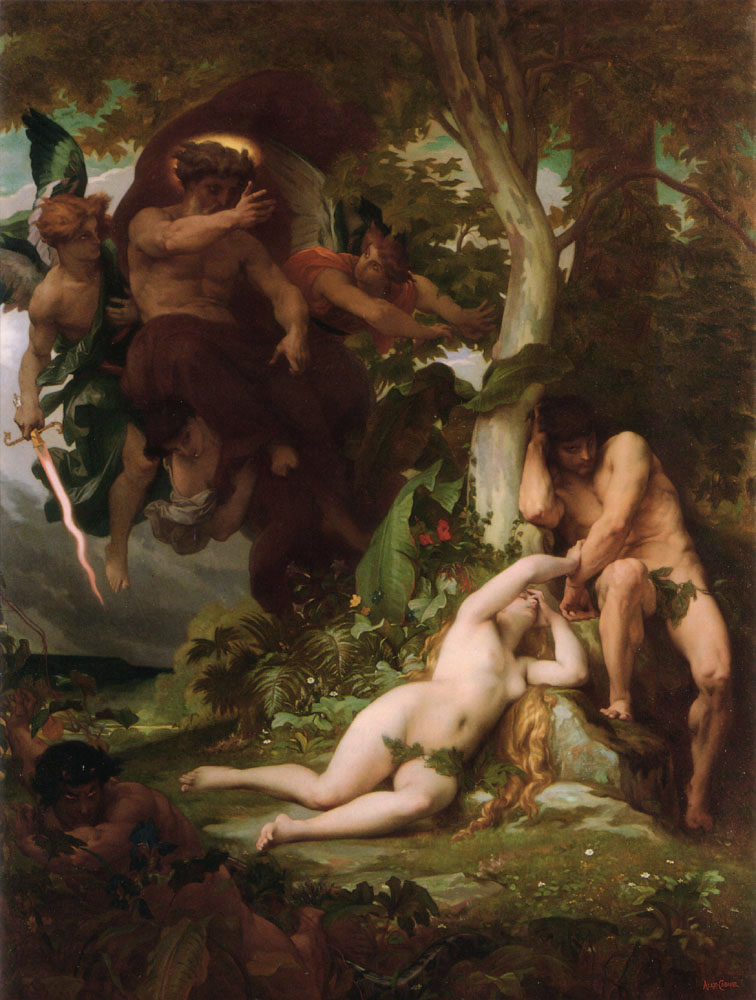
As we mentioned, the importance of these stories is found in how they apply to us now. Although Adam and Eve have significance in relation with the ancient past, the brilliance of Moses is clearly seen in how by the grace of the divine he wrote very deep, multilayered stories.
Adam and Eve relate to us personally here and now.
Adam represents our mind, our psychological state. Eve, the “mother of the living,” who brings living things into the world, represents our sexual organs. Eve, our sexual organs, offers the forbidden fruit to our mind, Adam. When we “eat of it,” we leave “Eden,” a Hebrew word that means “bliss.” To leave Eden means to leave behind that state of being in which one knows the Elohim personally, directly. Naturally, that is the state of all of us now. If someone claims to know God, we think they have gone insane. Yet, that was the primordial state of humanity.
Cain and Abel
After the story of Adam and Eve occurs that of their “children” Cain and Abel. Their story represents the conflict in us between the innate purity of the psyche (represented by Abel) and the ever-dissatisfied desires we have (Cain). Our desires “kill” the purity of the psyche (Cain kills Abel). Now, Abel, that part of us, does not cease to exist; by “dying” is represented how it has become almost completely powerless, trapped, overwhelmed, by the spread of desire. In other words, when desire rules us psychologically, Abel is rendered “dead.”
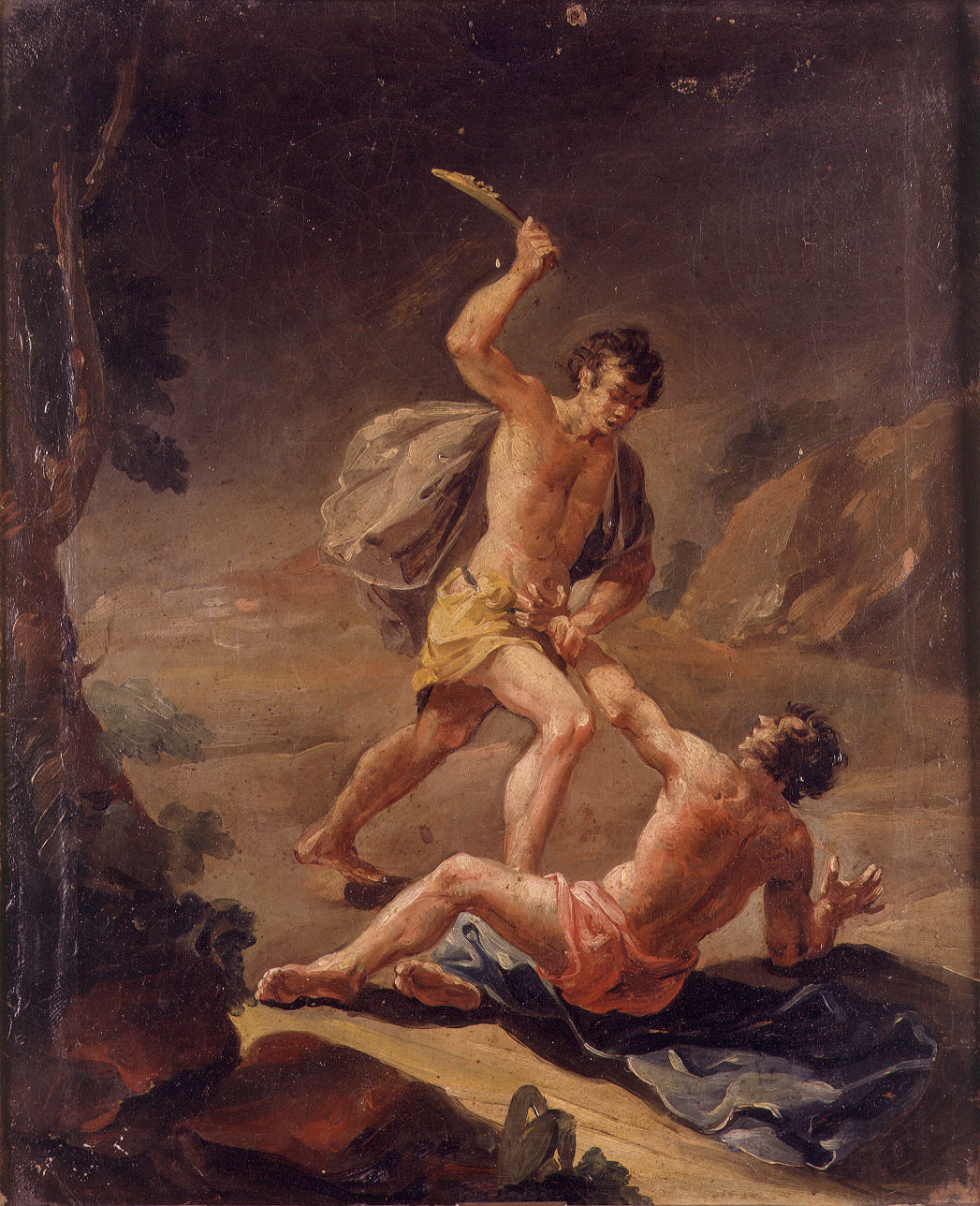
We let our desires (Cain) kill our conscience (Abel).
"Cain rose up against Abel his brother, and slew him." - Genesis 4
So what happens next in the Bible? The story of Noah.
Let us review. This is a summary of chapters 1-4 of Genesis, from the point of view we are examining:
- 1st: Adam and Eve (mind and sexual organs) succumb to temptation and leave the blissful state.
- 2nd: Cain (desire) “kills” Abel (the innate purity of the mind), rendering it impotent.
- 3rd: Divinity sees us in our corrupted state: divorced from Eden (the state of bliss in which we know divinity directly), ruled by desire (Cain), craving for even more impurity (ער rah). Since our inner divinity loves us and wants to help us, it regrets our being in that state.
So you see, this is not hard to understand.
Our current state of being is that of “Adam and Eve” in the wilderness: we suffer, we cannot talk to God face to face, in fact we may not even believe in divinity. Yet, if we learn how to rectify that mistake, and overcome the temptation of Eve, we can return to Eden: a state of happiness and spiritual perception. That is the point of the story of Noah.
The Cleansing of "the Earth"
So let us read this passage again, but first, let us understand the symbol of the word “earth.” The “earth” represents that which houses our psyche; the “earth” is our body; it is our “kingdom,” our own world or land. We live in our “earth,” the body, yet that body is not just physical. It is also the body we inhabit when we dream, when we imagine, daydream, or fantasize. When we dream, we inhabit a kind of body that is not physical; that body is also our “earth.” So altogether, we call that matter our “earth.”
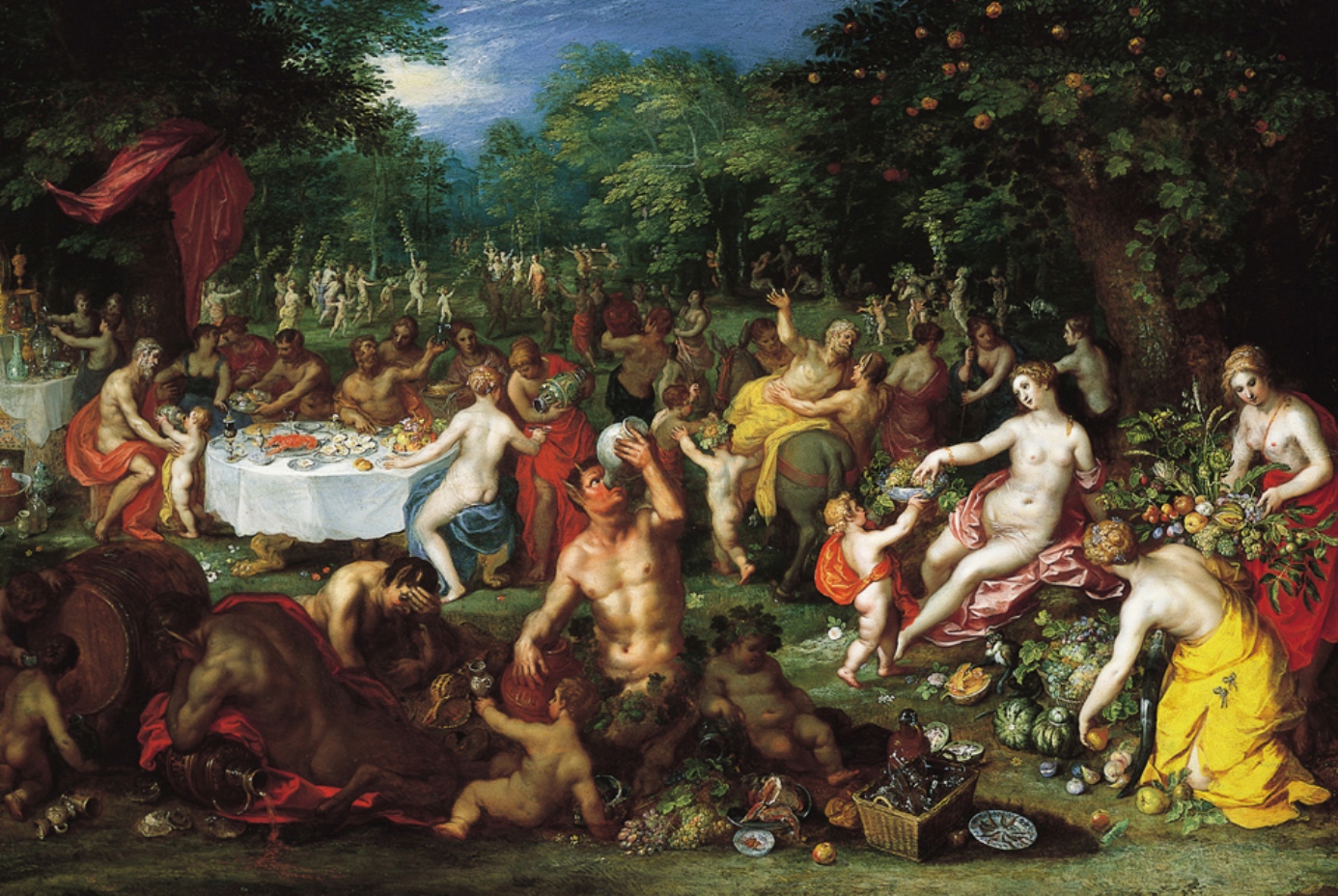
The bacchanal that is always ongoing in our minds.
“And יהוה Iod-Chavah [our inner divinity] saw that the impurity [ער rah: pollution] of [our mind] was great in the [body], and that every imagination of the thoughts of his heart was only impurity continually.
“And it repented יהוה Iod-Chavah that he had made [the mind that is] in the [body], and it grieved him at his heart.
“And יהוה Iod-Chavah said, I will destroy [that corrupted mind] whom I have created from the [image] of the [body]; both [the mind], and [the animal ego], and the creeping thing [perverted elements in our mind], and the fowls of the heavens [distracting thoughts that fly in fantasy]…” –Genesis 6
Psychologically, this story makes sense now. None of us are “meek sheep,” or “innocent angels.” Our minds are deeply corrupted with pride, lust, anger, envy, greed, etc. All of that exists because of the choices we have made: tempted by desire, we grow those elements in our psyche, and have been growing them for centuries. So, just as happens on a large scale in nature when a region becomes sick, nature must cleanse it to prevent the spread of impurity. Our own inner divinity must also cleanse us. Yet, that cleansing is not pleasant. This is the meaning behind many stories in the scriptures: the story of Lot, Moses, Adam and Eve, Job, Babylon, Egypt… all represent how our mind — a state of psychological slavery to impure elements — has to be purged, cleansed, and destroyed, so that the pure element — the consciousness — can be freed.
The Preservation of Noah
“But [Noach, Noah] found grace in the eyes of יהוה Iod-Chavah.” - Genesis 6:8
So, amongst all that degeneration within us, the divinity sees one element worth saving: Noah.
The Hebrew name נח Noah has two letters.
- The first letter, נ Nun, represents a fish.
- The second letter, ח Chet, is the root of the word Chai, “life.”
In all the versions of the flood story from around the world, because of widespread corruption, all living things have to be destroyed. Yet, for life to continue, that which is pure is preserved by staying above the waters. In the Hindu versions of the story, a god in the form of a fish guides the pure souls to the safety of a mountain top.
![]()
“…the [God in the form of a] fish diligently dragged the boat through the flood for many a long year and then… it towed the vessel towards the highest peak of the Himavat. And, O Bharata, the [divine] fish then told those on the vessel to tie it to the peak of the Himavat.” - The Mahabharata, Book 3: Vana Parva: Markandeya-Samasya Parva: Section 186
It is exceedingly interesting that the name Noah hides these very elements: the fish, and life itself.
The fish is a core symbol in all religions, especially Christianity. The primary symbol of early Christians was not the cross — it was a fish. Yet few know why. Jesus himself pointed out its importance when he pointed towards Jonah and the story of the great fish (the name Jonah also has the letter נ Nun, the fish, in it). One of the great miracles of Jesus is that of the loaves and the fishes, another important symbolic event. There are very deep esoteric mysteries related to the fish, mysteries completely ignored by the modern interpretations of the scriptures.
In each case, the fish represents the life force in the waters. Clearly, that is what is indicated by the very name Noah: נ Nun (fish) + ח Chet (life). Where do we find that in ourselves? For that, we look to the source of our lives: the sexual energy. The sperm and the ovum are “fish” in the “waters” of sexuality. When combined, life emerges. The only way to create life is through working with those “seeds.”
Thus, “Noah” is a seed hidden inside of us. Noah is the “seed of the soul.”
Noah represents the true nature of our psyche, which is known in different traditions by names like the consciousness, the soul, the jiva, the “buddha nature” — a pure, unblemished, naturally radiant and cognizant spark of the divine, which through a specific science can be grown into a fully-fledged master, angel, or buddha (whatever name you want to use). In fact, the name Noach means “rest.” If you have studied Hinduism or Buddhism, you will see immediately that this corresponds to the ultimate goal of those traditions: Nirvana, which means “rest, cessation.” That is why the scripture continues with:
“These are the result of Noah: Noah was a righteous איש iysh [masculine fire] and perfect in his generation [sexual outcome], and Noah walked with Elohim [gods and goddesses]. And Noah begat three sons, Shem, Ham, and Japheth.” - Genesis 6:9-10
In case you did not know, the Hebrew word Elohim is plural: it means “gods and goddesses.” It is odd that people claim Judaism and Christianity are monotheistic, when the scriptures themselves are not.
“So Elohim [gods and goddesses] created Adam in their image, in the image of Elohim [gods and goddesses] created they them: male-female created they them.” - Genesis 1:27
Let us not digress too far, however.
We were explaining that Noach represents the seed of the soul. This is clearly explained in the very next passage of the scripture.
The Creation of the Soul
“These are the result of Noah: Noah was a righteous איש iysh and perfect in his generation, and Noah walked with Elohim [gods and goddesses]. And Noah begat three sons, Shem, Ham, and Japheth.” - Genesis 6:9-10
The three “sons” of Noah are symbolic of the three parts of the fully developed soul.
In spite of the degeneration that has corrupted us all, “Noah” must survive if the soul is to be developed.
If this idea about developing the soul seems new to you, it may be because that aspect of Christianity was edited out of the teaching. Nevertheless, Jesus did say:
“With patience ye will [eventually] possess your souls.” - Luke 21:19
The developed soul is represented by the wedding garment mentioned by Jesus, the chariot of Ezekiel, the chariot of Krishna, the solar boat of the Egyptians, the golden body of the Greeks, and many other mythological symbols.
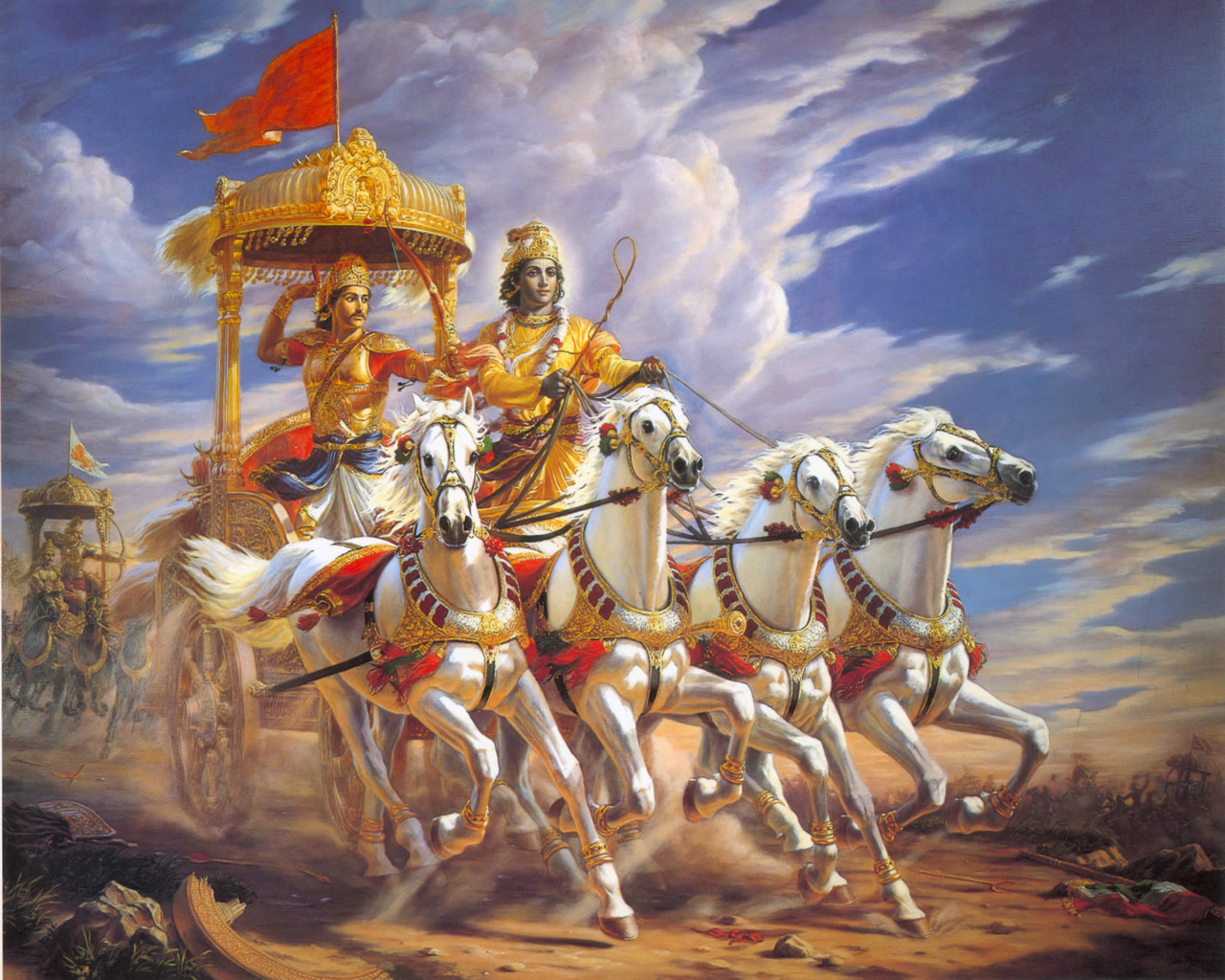
From The Mahabharata, Krishna (Christ) drives the chariot (Solar Bodies) of Arjuna (the Human Soul).
The soul can only be made through a “second birth,” taught by Jesus as resulting from the Holy Spirit (fire) and a secret living water, both of which were discussed at length by Jesus, and are hidden symbolically throughout the scriptures.
“Jesus answered and said unto him, Verily, verily, I say unto thee, Except a man be born again, he cannot see the kingdom of God.
“Nicodemus saith unto him, How can a man be born when he is old? can he enter the second time into his mother's womb, and be born?
“Jesus answered, Verily, verily, I say unto thee, Except a man be born of [living] water and of the [Holy] Spirit [which is fire], he cannot enter into the kingdom of God.
“That which is born of the flesh is flesh [physical]; and that which is born of the Spirit is spirit[-ual; in other words: soul].” - John 3
Birth is sexual, whether relating to physical birth or spiritual birth. The soul has to be made, born. We do not have a true soul until we make one. We have the seed of the soul, the potential to be born, but we are not “born again” until the soul is born.
No one is born by saying words or believing something. Birth is a sexual matter.
Noah is the seed of the soul, and the spark that starts the fire.
“Noah a righteous איש [iysh]…” - Genesis 6:9
The word איש can be translated as “man,” yet the symbolism of this word is overwhelming: it is the word אש esh, “fire,” with the letter יiod in the middle. י Iod has so many meanings that we gave several lectures just about it: it represents a man, the covenant between man and God, circumcision, the phallus, and much more. So איש can be understood as representing someone who is following the commandments, obeying the pact of fire (sexual purity), who “stands in the midst of the fire of the furnace and is not burned” (see Daniel 3, where the three men, the parts of the soul, stand in the fire of the furnace with a mysterious fourth man, like Noah and his three “sons.” You should also be aware that “furnace” is etymologically connected to the word “fornication.”)
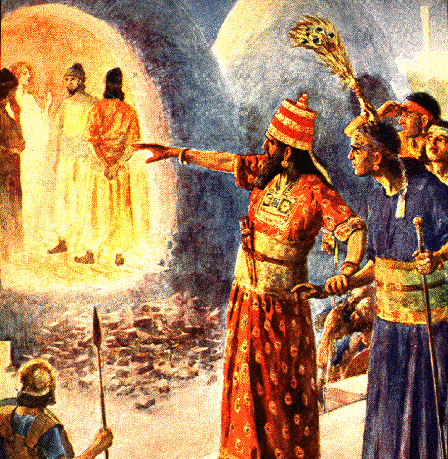
In synthesis, by preserving our inner Noah, our divinity can purge the impurity that traps us in suffering. That inner fire, Noah, has to be protected in the ark-anum — the secret knowledge — within which he will float upon the waters that consume all impurity. You see: the water and the fire work together.
The Corruption of the Earth
The scripture continues:
“The earth [body] also was corrupt before Elohim [the gods and goddesses], and the earth [body] was filled with wrongdoing.
“And Elohim [the gods and goddesses] looked upon the earth [body], and, behold, it was corrupt; for all flesh had corrupted his way upon the earth [body].
“And Elohim [the gods and goddesses] said unto Noah, The end of all flesh is come before me; for the earth [body] is filled with wrongdoing through them; and, behold, I will destroy them with the earth [body].” –Genesis 6:11-13
This does not mean that by destroying the physical body liberation is achieved. The corruption of the “earth” is deeper than that: it is a corruption of more than just the physical body. Death does not clean your mind of impurities. The cleansing we need cannot be had through mere physical death. That is why the gods have to intervene.
We explained that the “earth” is not just the physical body: it is our matter, which extends beyond the physical world. When you feel angry, that quality takes over your mind, heart, and physical body. All of that together is your “earth.” So, to destroy that anger, it is necessary to destroy it where it resides: in the mind itself. When you dream, you dream with that anger. Your physical body is not there; it is asleep in its bed. Yet, in your dream, you are still in your earth, but not your physical earth. So, the corruption of the earth extends beyond just the physical body. The cleansing we need must also extend beyond physicality. That is why hell exists: it cleanses the mind. Yet, if one becomes clean first, there is no need to go there.
The Seed in the Shell
In fact, we need the physical body in order to achieve liberation. You see, as well as being related to the true nature of our being, Noah is also related to elements in us physically. To be saved from the flood,” Noah has to be preserved in the Ark.
We explained that the Ark is not a boat, but is a deep symbol with many overlapping meanings. The Ark represents the teaching: the arcanum. The Ark also represents the physical body. Hidden within the body, secretly, is a precious, life-giving, divine element. In other words, your body is the hull (tebah: hull) of the seed (Noah), and inside of it are the raw elements from which something great can be created. That seed is your own inner Noah (Manu).
Every seed contains an archetype. Notice the words: ark-etype. An archetype is a blueprint, a plan, a potential. The word archetype comes from Latin archetypum, from Greek arkhetypon "pattern, model, figure on a seal," from arkhetypos "first-moulded," from arkhe- “first."
Within the seed of a plant is the potential to become that plant. Likewise, within the human seed (semen and ovum) are archetypes: potentials — yet, in our case, that potential has not been fully realized. We have a human shape, but we are not like Noah, Moses, Manu, Zi-ud-sura. Yet, we have that potential: it is in our ark, our seed.
Building the Ark
So if the Ark is the secret science and also the physical body, why does Noah have to build it? Because the Ark represents stages of development of that body.

The common English translation says,
“Make thee an ark of gopher wood; rooms shalt thou make in the ark, and shalt pitch it within and without with pitch.” - Gen 6:14
There is no such wood called “gopher.” Scholars have debated its identity, but will never uncover it, because it is not a literal wood.
In Hebrew, this passage is עצי־גפר. The first two letters עץ ets can be interpreted as “wood” or “tree.” There are two trees of significance in the Bible, both of which are written with עצ:
- עץ החיים: the tree of life
- עץ הדעת טוב ורע: the tree of knowledge of good and evil
This whole story started with the abuse of the tree of knowledge. It is why Adam and Eve had to leave the garden. Thus, the way to return is by the same tree. Likewise, it then makes sense to translate עצ of this passage not as "wood," but as "tree."
The Hebrew word גפר gopher is shortened from גפרית, gophriyth, sulphur (called in the Bible “brimstone”). In Alchemy, sulphur is the symbol of fire. Thus, this passage actually says:
“Make thee a tebah [container] from the sulfurous tree…” - Gen 6:14
The sulfurous tree is the same as the “burning bush” seen by Moses. It is a “matchstick,” wood topped by sulphur, and used to start fires. It is the tree of knowledge.
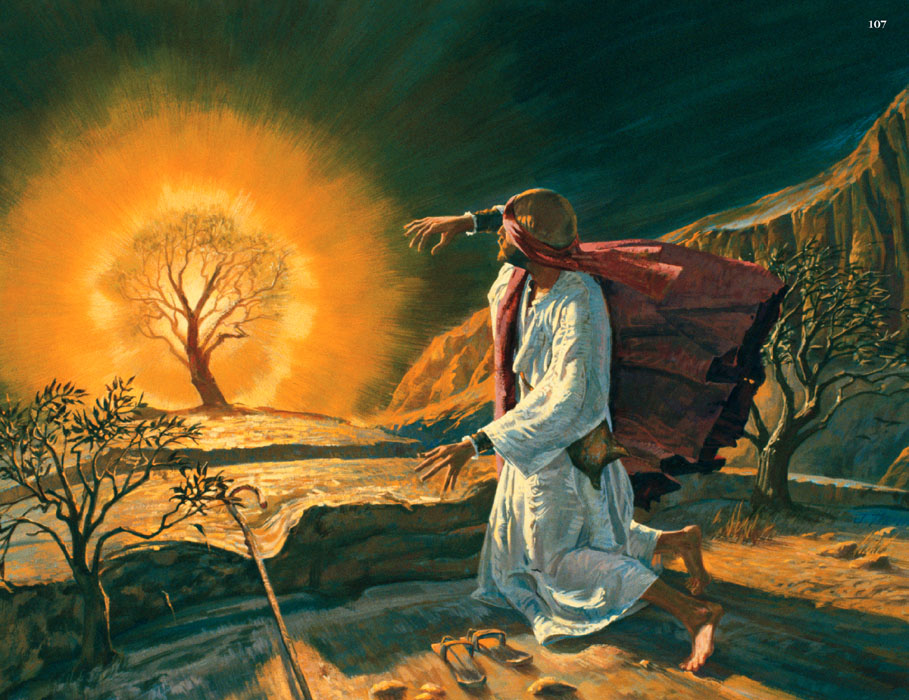
In the Bible, “knowledge” or “to know” is sexual:
“Now the man knew his wife Eve, and she conceived and bore Cain... - Genesis 4:1
“And the angel said unto her, Fear not, Mary: for thou hast found favour with God. And, behold, thou shalt conceive in thy womb, and bring forth a son, and shalt call his name JESUS...
“Then said Mary unto the angel, How shall this be, seeing I know not a man?” - Luke 1:30-34
In the Bible, knowledge implies sexual knowledge. Moreover, it is related to fire: sexual desire is a “burning” energy. It is a kind of fire, that if used wisely, can be very constructive. Yet if used foolishly, can be very destructive. The “tree of knowledge of good and evil” is dualistic, meaning sexual knowledge can be good or evil. Naturally, to build the ark, to return to Eden, one has to know how to use the tree in the good way.
This sentence continues:
“…qenim shalt thou make in the tebah…” - Gen 6:14
In English, qenim is translated as “rooms,” but actually it is plural for reeds, canes, or stalks. The reed, cane, staff, or rod is an ancient symbol of the spinal column of a spiritually developed person. The ancient masters carried staves not for fashion, but as a symbol of the fire developed in their spinal column. It is plural here because the work to create the Ark is a collaboration between man and woman.
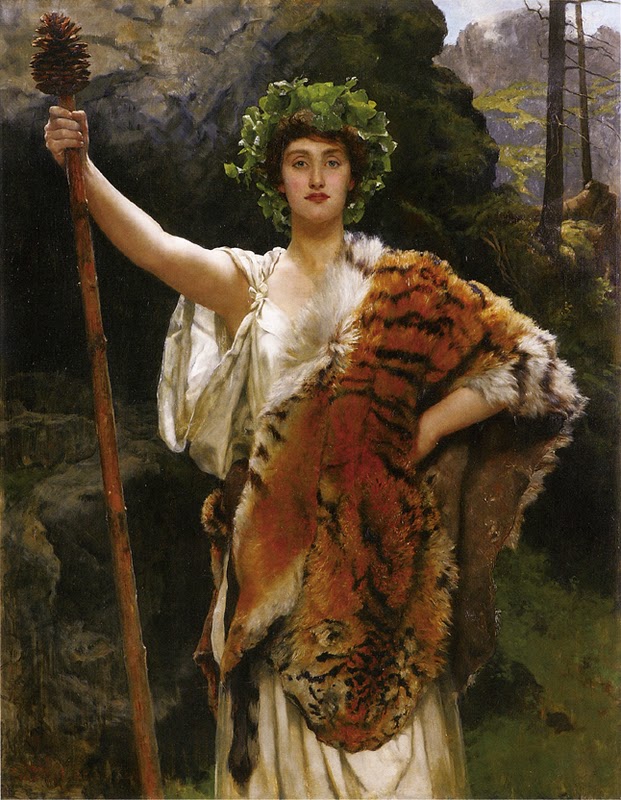
John Collier painted this portrait of a Greek Baccante with her symbolic items: the skin of the slain animal desire, the wreath of victory on her head, and in her hand, the staff topped by a pine cone, symbol of the awakened pineal gland, the "seat of the soul," the "eye of Brahma," or in other words, the source of spiritual vision.
It is of great significance that the whole of this description occurs in chapter six of Genesis / Bereshit. Firstly, because the name of the book means “beginning” and thus explains how to begin the spiritual path. Secondly, because in Hebrew the number six is the letter ו vav, which represents the spinal column. So, this chapter is about the work with our spinal column.
Why is the spinal column important spiritually? It is the conduit that transmits all the energies of our nervous systems, and supports the energetic channels between our sexual organs and our brain. The caduceus of Mercury represents this symbolically, as does the staff topped by a pine cone as carried by the masters of old (the pine cone represents the pineal gland, whose very name has pine in it).
“…and shalt pitch it within and without with pitch.” - Gen 6:14
“Pitch” refers to how the vessel is hermetically sealed, to keep the impure flood waters out.
Continuing:
“And this Assiah shalt thou make…” - Gen 6:15
In Kabbalah, we study four worlds. Assiah is the fourth. It relates to the final state of a creative work, when the work is completed and made. Assiah can also refer to the physical body. (Assiah is mentioned in the book of Revelation, but mistranslated as “Asia.”)
“The length of the tebah shall be three hundred cubits, the breadth of it fifty cubits, and the height of it thirty cubits.” - Gen 6:15
Every Hebrew letter is also a number. So these numbers are actually letters:
- 300: ש Shin, which represents fire
- 50: נ Nun, which represents a fish
- 30: ל Lamed, which represents a staff
These letters represent the work that must be done in the physical body in order to achieve liberation.
The letter ש Shin relates to the trinity, the three primary forces. It is the creative fire at the base of life. It is the fire that enflamed the burning bush before Moses. ש Shin represents the power of creation inherent in every atom, a power that we must harness and direct towards liberation, rather than using our energies to degenerate ourselves further.
The letter נ Nun is life in movement, the “fish” or living power of sexuality. As already mentioned, the fish resides in our sexual waters. By harnessing that force, we can achieve the “second birth.” Jesus spoke often of the “living water.”
The letter ל Lamed is the staff of Moses, the rod of Aaron, which represent the creative fire of the letter Shin “raised upon a pole” as a brazen serpent, like Moses did. This creative fire, raised up the spinal column “healed the Israelites” (see Numbers 21). More specifically, it is the qenim (reed, cane) of the previous verse, but developed, enflamed. In the East, this is called kundalini. In the book of Acts, it is represented by the fire that alights on the heads of the apostles (after rising up their spinal columns).
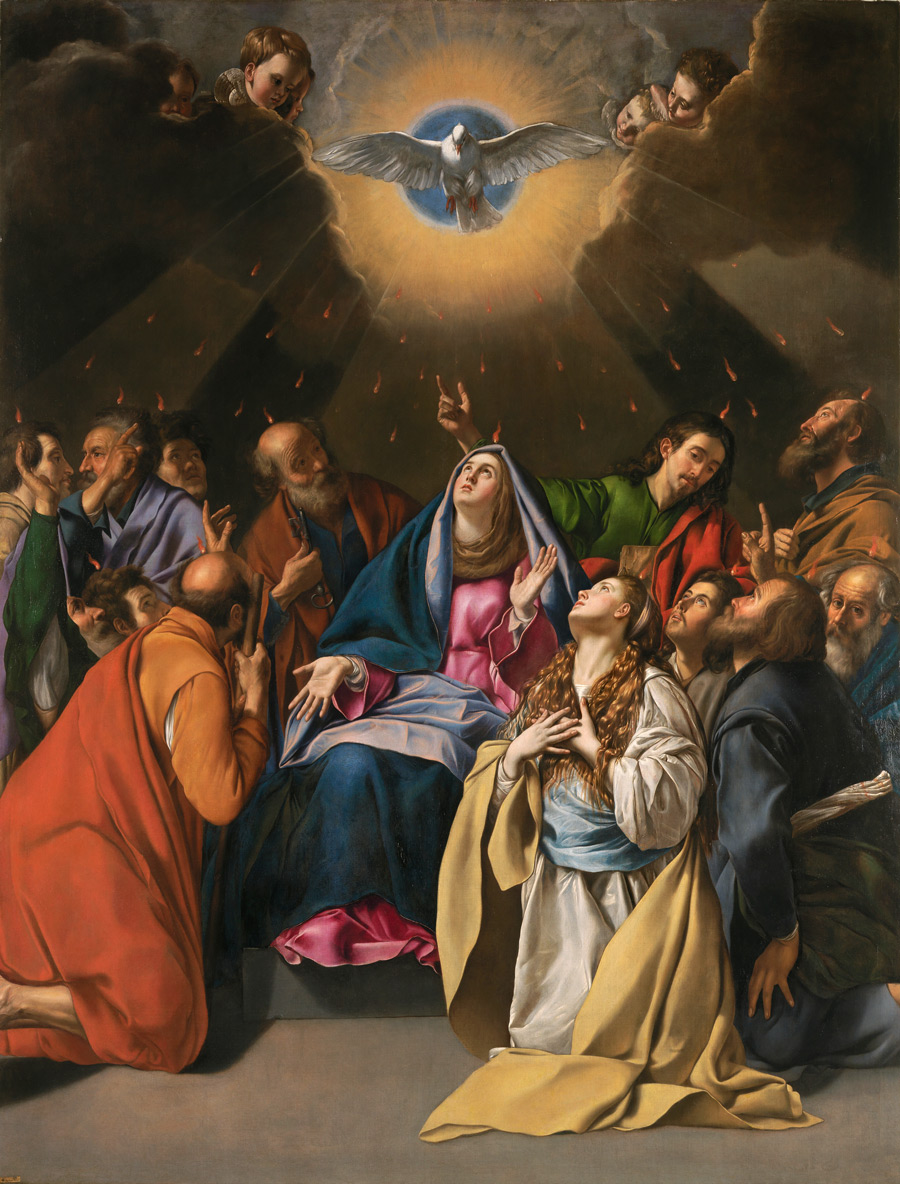
Spiritual illumination is produced by an abundance of inner light. That light is radiated from the fire, the letter ש Shin, which represents the fundamental trinity of forces in all things, and which is within the sulfurous wood of the tree of knowledge within us.
The story of Noah represents an alchemical process of transmutation, in which the base matter is purged and purified and a perfected matter can be elaborated.
The rest of the story — the flood, the forty days and nights, the death of the impure – all relate to the psychological transformations we must undergo on the spiritual path.
Spiritual advancement is accomplished through purification and transformation. All that is impure in us must die, while the purity must be developed and perfected.
When we study Kabbalah we know that תבה Tebah, the Ark, is the physical body. This body receives the forces of divinity, known as יהוה Iod-Chavah or Jehovah in the Old Testament, which can be activated if one knows the secret, the method, the ark or Arcanum. Religious writings throughout antiquity have referred to the need for purification within the body, for “know ye not that your body is the temple of the Holy Ghost which is in you, which ye have of God, and ye are not your own?” (1 Corinthians 6:19). When there is filthiness in the body and soul, the flood waters of degeneration destroy it. But if the soul knows the secret science, the ark or Great Arcanum, then it can develop like Noah in order to be righteous and favored by divinity.
However, in the Book of Genesis we find that humanity had abused these energies for their own personal, egotistical whims.
The Flood and the Earth
Divinity throughout all traditions instructed the prophets and guides of humanity to respect the use of the body and mind, since it is a temple that can house the forces of God. It is only when human beings lost sight of the divine purpose of their temple did they fall into degeneration and sin.
The ark, or physical body, was once considered sacred by all ancient religious traditions, and that it is the storehouse of spiritual principles that can liberate the human being.
"The Ark is the sacred Argha of the Hindus, and thus the relation in which it stands to Noah's ark may be easily inferred when we learn that the Argha was an oblong vessel, used by the high priests as a sacrificial chalice in the worship of Isis, Astarte, and Venus-Aphrodite, all of whom were goddesses of the generative powers of nature, or of matter—hence representing symbolically the Ark containing the germs of all living things." - H.P. Blavatsky, Isis Unveiled
The animals of the Noah story represent these germs of all living things, the sperm and ovum contained within the physical body. These germs within man and woman are represented by the “male and female animals” stored within the “ark.” These primordial root elements can provide physical life or spiritual life, depending upon their usage. This is the hidden principle behind the Book of Genesis, which has traditionally been read as a story of the “generations” of Adam and Eve—a literal history—but the symbols actually signify the process of generating, creating, and cleansing the soul.
When God said, “Be fruitful and multiply on the earth” in Genesis, this is a reference to the conservation and propagation of one’s vital, spiritual forces. However, these divine influences can only flourish within us by building the Ark: by practicing the arcane or secret science. Those who do not practice the secret teachings as given in the scriptures are swallowed by the floodwaters of destruction.
This story is a tremendous warning regarding the behavior of humanity in this day—if people continue to indulge in passion, violence, greed, promiscuity, and war—then the Elohim have no choice but to annihilate this humanity out of compassion for the soul, so that it may resonate with the divine laws after its purification. This destruction is not just physical, but psychological and spiritual, since when the physical body dies, the psyche continues in more subtle levels of matter, energy, and consciousness. Physical death does not guarantee purification and salvation, since this is something internal, beyond the physical world.
It is necessary to understand that there are two ways for divinity to purify the psyche.
“Behold, I set before you the way of life, and the way of death.” –Jeremiah 21:8
No matter what, the psyche must be purified. However, if we chose not to willingly purify ourselves as Noah did, then nature will do it for us, through the process religions call “hell.” This path of failure is one of great suffering, and in the end provides no development for the soul. On the other hand we have the path of life, of reunion with the divine that results in beautification, sanctification, knowledge, and harmony with divinity. It is represented in the lives of the prophets, saints, buddhas, etc.
Despite the sufferings, difficulties, and sacrifices involved by walking this path, it is the only one that results in the complete development and liberation of the soul, for as Jesus of Nazareth taught:
“Enter ye in at the strait gate: for wide is the gate, and broad is the way, that leadeth to destruction [Gehenna], and many there be which go in thereat:
“Because strait is the gate, and narrow is the way, which leadeth unto life, and few there be that find it.” –Matthew 7:13-14
This “straight and narrow way” to heaven, a pure state of being, is entered in by the few who long to obey divinity and who willingly work on their defects in order to be purified, developing virtue, humility, compassion, and love as a result of approaching divinity. Most of humanity throughout the different ages have chosen to be cleansed by nature, as evidenced throughout world mythologies and scripture. While there is a physical component to the destruction of humanity, the most painful process is within the inferior dimensions of the cosmos, known as hell, Gehenna, where the disincarnated souls continue to suffer from their own afflictions and desires until they are cleansed and recycled through the destructive powers of nature.
Before this process of purification in hell, humanity must first be annihilated through physical catastrophes. While the Biblical text explained that the Elohim would not destroy humanity as in the past, we find other natural disasters occurring on an exponential scale in our world today, such as tsunamis, earth quakes, sea quakes, volcanoes, and devastating storms. Many thousands of people have died already and survivors are forced to endure great tribulation resulting from destruction and poverty.
This is tremendous suffering on the physical level, yet the souls of the dead continue in other levels of matter, energy, and consciousness with the same preoccupations, worries, sufferings, and hatreds they had when they were physically alive. However, in the inferior dimensions of nature, which can be accessed when one goes to sleep in order to dream, such sufferings are by far more intense than what can be experienced in our physical world.
Such cataclysms are a gentle prelude to a much worse catastrophe that has been mentioned by the prophets and teachers of all the world’s great religions and spiritual traditions, and which is symbolically hidden in the story of Noah. If we wish to avoid the prophesied destruction mentioned throughout all the great religious writings, then we must learn and practice this mysterious science. However, few have ever entered onto the path of life, which is the path followed by Jesus, Buddha, Muhammad, and the great spiritual guides. To follow it takes tremendous courage, since it requires the complete destruction of one’s psychological impurity.
Many “spiritual” people want to live in the new heaven and new earth mentioned in the Book of Revelation, but they ignore that it is primarily a symbol — a reference to a pure state of mind. In order to inhabit the new world, the mind and heart must be cleansed. This is impossible to accomplish without knowing the secret science of Noah, since those who are recycled by nature do not gain anything but suffering, and who will not be privileged to populate the newly-purified world.
It is only once our internal psychological filthiness is eradicated by the floodwaters of spiritual practice that Elohim can establish a new heaven and a new earth, meaning: a new life for the practitioner of genuine religion, the heavens representing a pure state of consciousness, and the earth referring to purity within one’s physicality and mind—the temple of the divine.
"Now learn a parable of the fig [or Gopher] tree; when his branch is yet tender, and putteth forth leaves, ye know that summer is nigh: So likewise ye, when ye shall see all these things, know that it is near, even at the doors.
"Verily I say unto you, This generation [of humanoids] shall not pass, till all these things be fulfilled. Heaven and earth shall pass away, but my words shall not pass away.
"But of that day and hour knoweth no man, no, not the angels of heaven, but my Father only.
"But as the days of Noah were, so shall also the coming of the Son of man be. For as in those days that were before the flood they were eating and drinking, marrying and giving in marriage, until the day that Noah entered into the ark, and knew not until the flood came, and took them all away; so shall also the coming of the Son of man be." - Matthew 24: 32-39